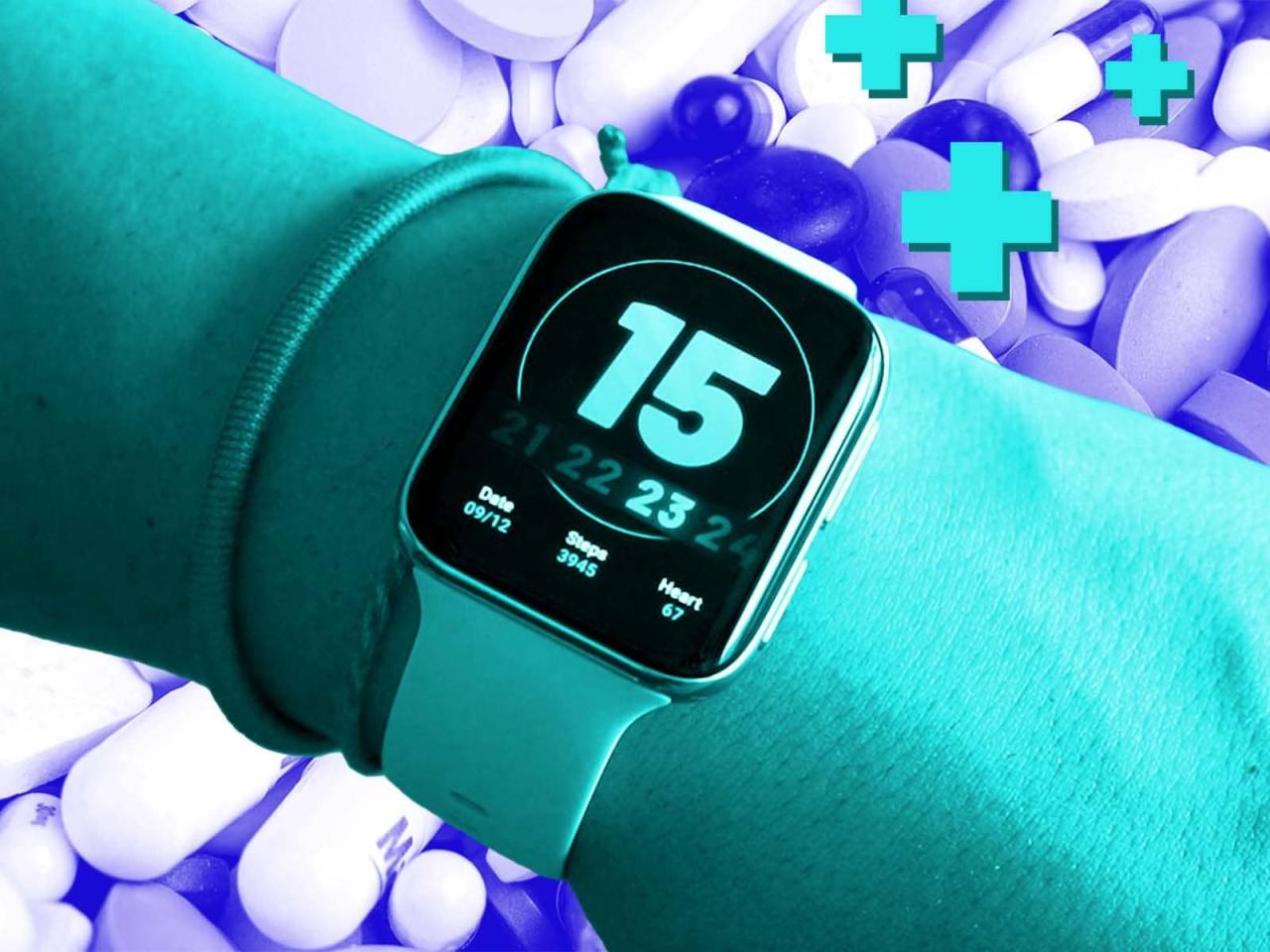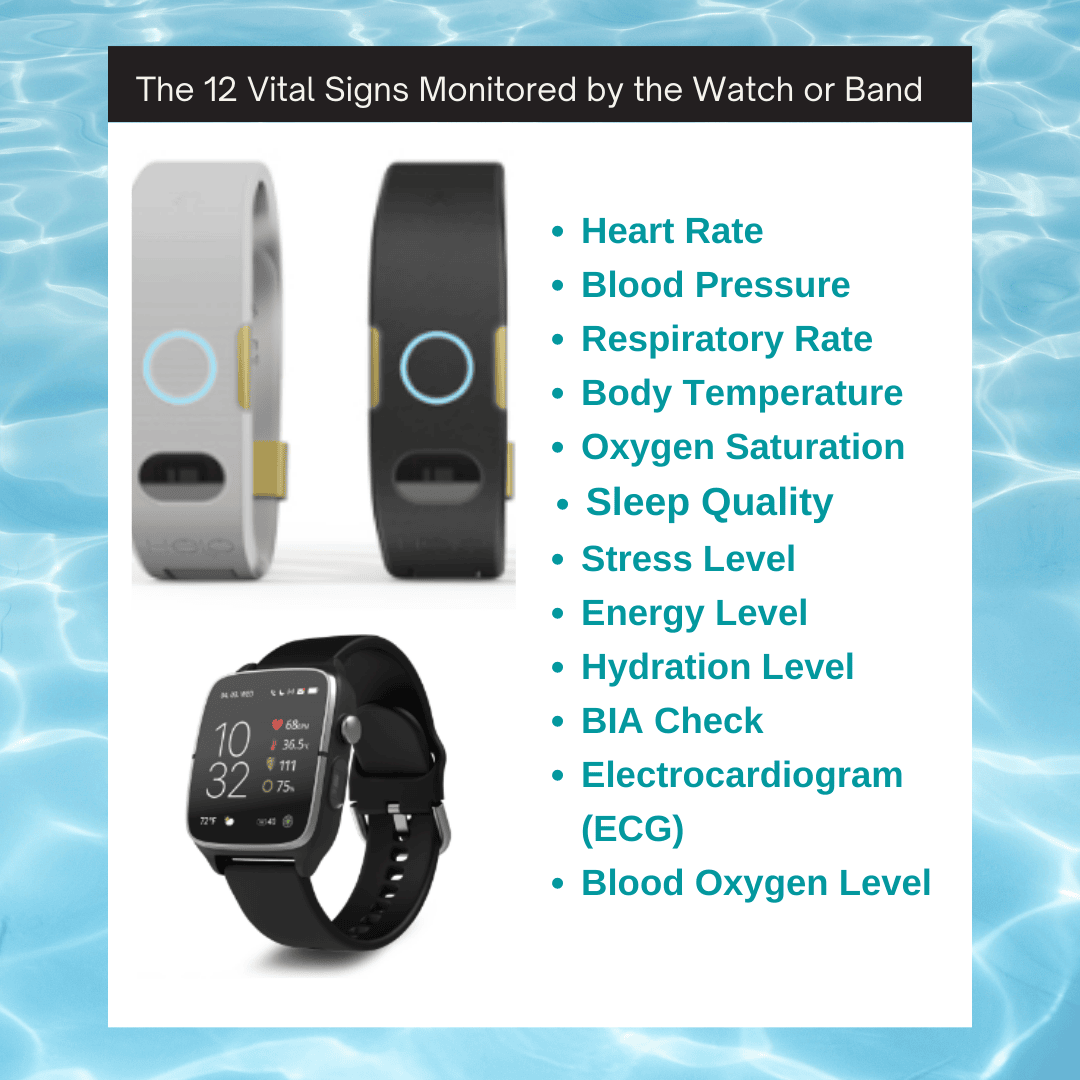General
Best Wearable Devices for Tracking Health Metrics: A Comprehensive Guide

Exploring the world of wearable devices for tracking health metrics opens up a realm of possibilities for individuals looking to take control of their well-being. From monitoring key health metrics to integrating seamlessly with health apps, these devices offer a holistic approach to health management.
Let's dive into the exciting landscape of wearable technology and discover how it can revolutionize the way we track and improve our health.
As we delve deeper into the realm of wearable devices for tracking health metrics, we will uncover the essential features, popular brands, integration with health ecosystems, user experience aspects, and much more. Stay tuned for a journey filled with valuable insights and practical tips to help you make informed decisions about your health and well-being.
Introduction to Wearable Health Devices
Wearable health devices are electronic devices that are worn on the body to monitor and track various health metrics in real-time. These devices have gained popularity in recent years due to their convenience and ability to provide individuals with valuable insights into their health and fitness levels.Tracking health metrics using wearable devices is important as it allows individuals to monitor their progress, set goals, and make informed decisions about their health and well-being.
By continuously tracking metrics such as heart rate, sleep patterns, steps taken, and calorie intake, users can better understand their overall health and make necessary adjustments to improve their lifestyle.Some popular wearable health devices available in the market include smartwatches like the Apple Watch, fitness trackers like Fitbit, and health monitoring devices like the Oura Ring.
These devices offer a range of features such as activity tracking, sleep monitoring, heart rate monitoring, and even stress management tools to help users stay on top of their health goals.
Key Health Metrics Tracked by Wearable Devices
Wearable devices are equipped with sensors that can monitor various health metrics, providing valuable insights into an individual's well-being.
Heart Rate
One of the most common health metrics tracked by wearable devices is heart rate. Monitoring your heart rate can help you understand your cardiovascular health and track changes during physical activities or periods of rest.
Physical Activity
Wearable devices can also track your physical activity levels, including steps taken, distance traveled, and calories burned. This information can help you stay active and maintain a healthy lifestyle.
Sleep Patterns
Tracking sleep patterns can provide insights into the quality and duration of your sleep. Wearable devices can monitor your sleep cycles, helping you identify any disturbances or issues that may be affecting your rest.
Blood Pressure
Some advanced wearable devices can also track blood pressure levels, which is crucial for monitoring cardiovascular health. By keeping track of your blood pressure, you can take proactive steps to maintain a healthy heart.
Stress Levels
Wearable devices with stress tracking capabilities can help you manage and reduce stress levels. By monitoring stress patterns throughout the day, you can take steps to relax and improve your overall well-being.
Features to Consider When Choosing a Wearable Health Device
When selecting a wearable health device, it is essential to consider various features to ensure it meets your individual health needs and goals. Here are some important features to look for:
Types of Sensors Used in Wearable Devices
Different wearable health devices utilize various sensors to track different health metrics. Here are some common types of sensors used in wearable devices:
- Heart rate monitor: Measures your heart rate continuously throughout the day and during exercise.
- Accelerometer: Tracks your movement and activity levels, providing data on steps taken, distance traveled, and calories burned.
- GPS: Offers accurate tracking of outdoor activities like running or cycling.
- Skin temperature sensor: Monitors changes in skin temperature, which can indicate stress levels or ovulation cycles.
Tips for Selecting the Best Device Based on Individual Health Needs
Choosing the right wearable health device depends on your specific health goals and requirements. Here are some tips to help you select the best device for you:
- Determine your health goals: Consider whether you want to focus on fitness tracking, heart health, sleep monitoring, or overall wellness.
- Compatibility: Ensure that the device is compatible with your smartphone or other devices to sync and view your data easily.
- Battery life: Look for a device with a long battery life to avoid frequent charging.
- Water resistance: If you plan to wear the device during swimming or intense workouts, choose a water-resistant model.
- Design and comfort: Select a device that is comfortable to wear and suits your style preferences.
Popular Brands and Models of Wearable Health Devices
When it comes to wearable health devices, there are several top brands that are known for producing reliable products. These brands offer a range of features that cater to different needs and preferences of users. Let's explore some popular brands and models of wearable health devices in the market.
Apple Watch Series 6
The Apple Watch Series 6 is a popular choice among users looking for a comprehensive health tracking device. It offers features such as ECG monitoring, blood oxygen level measurement, and activity tracking. The sleek design and seamless integration with Apple devices make it a favorite among Apple enthusiasts.
Fitbit Versa 3
Fitbit is another well-known brand in the wearable health device market, and the Fitbit Versa 3 is a standout model. This device tracks heart rate, sleep patterns, and exercise activities. It also offers built-in GPS and music storage, making it a great companion for fitness enthusiasts.
Samsung Galaxy Watch 3
Samsung's Galaxy Watch 3 is a stylish and feature-packed wearable health device. It offers advanced health monitoring features like blood pressure tracking, ECG monitoring, and SpO2 measurement. The rotating bezel design and compatibility with both Android and iOS devices make it a versatile option for users.
Garmin Forerunner 945
For serious athletes and fitness enthusiasts, the Garmin Forerunner 945 is a top choice. This model offers advanced performance metrics for running, cycling, and swimming. It also provides detailed training analysis and recovery tracking features, making it a valuable tool for improving athletic performance.
Pros and Cons of Popular Wearable Health Devices
- Apple Watch Series 6:Pros - Comprehensive health tracking features, seamless integration with Apple devices. Cons - Higher price point compared to other models.
- Fitbit Versa 3:Pros - Wide range of health tracking features, built-in GPS. Cons - Limited third-party app support.
- Samsung Galaxy Watch 3:Pros - Stylish design, advanced health monitoring features. Cons - Limited app ecosystem compared to other brands.
- Garmin Forerunner 945:Pros - Advanced performance metrics, detailed training analysis. Cons - Steeper learning curve for new users.
Integration with Health Apps and Ecosystems

Wearable devices that seamlessly integrate with health apps and ecosystems play a crucial role in providing users with a comprehensive view of their health metrics. This integration allows for the efficient tracking, analysis, and interpretation of data, leading to informed decisions and personalized health insights.
Data Syncing with Smartphones and Devices
Wearable devices sync data with smartphones and other devices through dedicated apps or Bluetooth connectivity. This syncing process ensures that health metrics such as heart rate, sleep patterns, steps taken, and calories burned are accurately recorded and easily accessible for users.
By syncing data in real-time, individuals can monitor their progress, set goals, and make adjustments to their lifestyle habits accordingly.
- Users can easily view their health data on their smartphones, tablets, or computers, allowing for a seamless and convenient tracking experience.
- Syncing data with other health devices, such as smart scales or blood pressure monitors, provides a holistic view of an individual's health status and progress.
- Automatic data syncing reduces the need for manual input, saving time and ensuring the accuracy of recorded health metrics.
Benefits of Compatibility with Health Ecosystems
Wearable devices that are compatible with health ecosystems offer a range of benefits to users, including enhanced data analysis, personalized recommendations, and a more integrated health tracking experience.
- Integration with health ecosystems allows for the aggregation of data from multiple sources, providing a comprehensive overview of an individual's health and wellness.
- Users can benefit from personalized insights and recommendations based on their health data, helping them make informed decisions about their lifestyle and fitness goals.
- Compatibility with popular health apps and platforms creates a seamless user experience, ensuring that individuals can easily access and share their health data with healthcare providers or fitness professionals.
User Experience and Design Considerations

When it comes to wearable health devices, user experience and design play a crucial role in how effectively individuals can track and monitor their health metrics. The comfort, convenience, and overall usability of these devices are directly impacted by their design elements.
User Experience of Wearing and Using Wearable Health Devices
- Comfort: The comfort of wearing a device throughout the day is essential for user compliance. Lightweight materials, adjustable straps, and ergonomic designs contribute to a comfortable user experience.
- Convenience: Easy navigation through the device interface, intuitive controls, and quick access to health data are key factors that enhance the overall user experience.
- Accuracy: Reliable data tracking and real-time feedback are crucial for users to trust the device and make informed decisions about their health.
Design Aspects Impacting User Comfort and Convenience
- Strap Materials: Soft and breathable materials prevent skin irritation and ensure a comfortable fit, especially during physical activities.
- Display Size and Visibility: A clear and easily readable display is essential for users to view their health metrics at a glance without straining their eyes.
- Water Resistance: Devices that are water-resistant or waterproof provide users with the flexibility to wear them during various activities, including swimming or showering.
Impact of Design on Usability and Effectiveness
- App Integration: Seamless integration with health apps and ecosystems enhances the usability of wearable devices by allowing users to sync and analyze their data effortlessly.
- Battery Life: Long-lasting battery performance ensures that users can rely on their devices for continuous health tracking without frequent recharging.
- Aesthetic Appeal: Stylish designs and customizable options not only make these devices fashionable but also encourage users to wear them consistently as part of their daily routine.
Final Review
In conclusion, wearable devices for tracking health metrics serve as powerful tools in our quest for better health. By understanding the key metrics, features, and brands available, individuals can make educated choices that align with their health goals. Embrace the world of wearable technology and embark on a journey towards a healthier lifestyle with these innovative devices by your side.
Commonly Asked Questions
What are the key health metrics commonly tracked by wearable devices?
Common health metrics tracked by wearable devices include heart rate, sleep patterns, steps taken, calories burned, and stress levels.
How do wearable devices sync data with smartphones and other devices?
Wearable devices usually use Bluetooth technology to sync data with smartphones and other devices, allowing users to conveniently access and analyze their health information.
What features should I look for when choosing a wearable health device?
Important features to consider include battery life, water resistance, accuracy of sensors, compatibility with health apps, and ease of use.

-

 General8 months ago
General8 months agoBest Insurance Lawyers Near Me for Claim Disputes: Your Ultimate Guide to Legal Assistance
-

 General8 months ago
General8 months agoNavigating Insurance Claim Denial Lawyers Near Me
-

 Design8 months ago
Design8 months agoOutdoor Design Essentials for a Holistic Lifestyle: Integrating CRM Automation for Lifestyle eCommerce Brands
-

 General8 months ago
General8 months agoWellness Lifestyle and Outdoor Living Integration Tips: Modern Farmhouse Exterior Ideas for Luxury Lifestyle Homes
-

 General8 months ago
General8 months agoThe Best Business Insurance for Interior Designers: A Comprehensive Guide
-

 General8 months ago
General8 months agoCrafting a Comprehensive Guide to Medical Malpractice and Insurance Settlement Law Firms
-

 General8 months ago
General8 months agoHow Exterior Renovations Affect Your Home Insurance Rates: A Comprehensive Guide
-

 General7 months ago
General7 months agoDigital health trends transforming Asia in 2025: A Glimpse into the Future of Healthcare




